Comprehensive Guide to Online Pharmacy Prescription Verification

With the rise of online pharmacies, prescription verification has become crucial in ensuring patient safety and compliance with regulations. This guide explores the importance, processes, and best practices for verifying prescriptions in an online pharmacy setting. For more detailed information, you can visit pafikotawonogiri.org.
Importance of Prescription Verification
Ensuring Patient Safety
Prescription verification is vital for ensuring patient safety. By verifying prescriptions, online pharmacies can prevent medication errors, adverse drug interactions, and ensure that patients receive the correct medications and dosages.
Compliance with Regulations
Online pharmacies must comply with federal and state regulations to operate legally. Prescription verification helps in adhering to these regulations, avoiding legal issues, and maintaining the pharmacy’s credibility.
Preventing Fraud
Prescription verification helps in preventing fraud and abuse. It ensures that prescriptions are legitimate and issued by licensed healthcare providers, thereby reducing the risk of dispensing controlled substances illegally.
The Prescription Verification Process
Receiving the Prescription
The first step in the verification process is receiving the prescription from the patient or healthcare provider. Prescriptions can be submitted electronically, via fax, or through mail. It is essential to ensure that the prescription is legible and contains all necessary information.
Checking for Completeness
Pharmacy technicians must check the prescription for completeness. This includes verifying the patient’s name, medication name, dosage, quantity, and instructions for use. Additionally, the prescriber’s information, including their name, license number, and contact details, must be present.
Validating the Prescriber
Validating the prescriber is a crucial step in the verification process. This involves checking the prescriber’s credentials to ensure they are licensed and authorized to prescribe medications. This can be done by cross-referencing the prescriber’s information with state or national licensing boards.
Tools and Technologies for Verification
Prescription Monitoring Programs (PMPs)
Prescription Monitoring Programs (PMPs) are state-run databases that track prescriptions for controlled substances. They are essential tools for verifying prescriptions and identifying potential cases of drug abuse or diversion.
Electronic Health Records (EHRs)
Electronic Health Records (EHRs) provide comprehensive patient information, including medication history and allergies. Access to EHRs helps in verifying prescriptions and ensuring that prescribed medications do not cause adverse interactions.
Pharmacy Management Software
Pharmacy management software streamlines the verification process by automating various tasks. These systems can flag potential issues, such as drug interactions or duplicate therapies, and provide alerts to pharmacy staff.
Best Practices for Prescription Verification
Standard Operating Procedures (SOPs)
Implementing Standard Operating Procedures (SOPs) ensures consistency and accuracy in the verification process. SOPs should outline each step of the process, from receiving the prescription to final approval, and include guidelines for handling discrepancies.
Continuous Training
Continuous training for pharmacy staff is essential to keep them updated with the latest regulations, technologies, and best practices. Regular training sessions and workshops help maintain high standards of verification.
Communication with Prescribers
Maintaining open communication with prescribers is crucial for resolving any discrepancies or clarifications needed during the verification process. Establishing good relationships with healthcare providers can facilitate smooth verification and improve patient care.
Common Challenges in Verification
Illegible Prescriptions
Illegible prescriptions can pose significant challenges in verification. Pharmacy staff must contact the prescriber for clarification, which can delay the dispensing process. Encouraging electronic prescriptions can mitigate this issue.
Fraudulent Prescriptions
Detecting fraudulent prescriptions requires vigilance and access to verification tools like PMPs. Pharmacy staff should be trained to identify red flags, such as unusually high quantities of controlled substances or inconsistent prescriber information.
Outdated Information
Outdated patient or prescriber information can hinder the verification process. Ensuring that the pharmacy’s records are regularly updated and cross-referencing information with reliable databases can help address this challenge.
Legal and Ethical Considerations
Confidentiality and Privacy
Maintaining patient confidentiality and privacy is paramount in the prescription verification process. Pharmacy staff must adhere to regulations like the Health Insurance Portability and Accountability Act (HIPAA) to protect patient information.
Ethical Dispensing Practices
Pharmacy technicians must adhere to ethical dispensing practices, ensuring that prescriptions are verified accurately and dispensed only to legitimate patients. This includes refusing to fill prescriptions that appear fraudulent or unsafe.
Regulatory Compliance
Compliance with federal and state regulations is essential for online pharmacies. This includes maintaining accurate records, participating in PMPs, and adhering to guidelines for controlled substances.
Future Trends in Prescription Verification
Blockchain Technology
Blockchain technology has the potential to revolutionize prescription verification by providing a secure, transparent, and tamper-proof method for tracking prescriptions. This can enhance the accuracy and reliability of the verification process.
Artificial Intelligence (AI)
AI can streamline the verification process by analyzing prescription data and identifying potential issues in real-time. AI-powered systems can flag discrepancies, detect fraud, and provide decision support for pharmacy staff.
Telepharmacy
Telepharmacy enables remote prescription verification and dispensing, expanding access to pharmacy services. This trend is particularly beneficial for rural and underserved areas, where access to traditional pharmacies may be limited.
Implementing an Effective Verification System
Integrating Verification Tools
Integrating tools like PMPs, EHRs, and pharmacy management software into a cohesive system enhances the efficiency and accuracy of prescription verification. This integration allows for seamless data sharing and analysis.
Regular Audits and Reviews
Regular audits and reviews of the verification process help identify areas for improvement and ensure compliance with regulations. Conducting internal audits and seeking feedback from staff can enhance the overall effectiveness of the system.
Patient Education
Educating patients about the importance of prescription verification and how they can participate in the process can improve compliance and safety. This includes informing them about the steps involved and encouraging them to provide accurate information.
Conclusion
Online pharmacy prescription verification is a critical component of ensuring patient safety, preventing fraud, and maintaining compliance with regulations. By implementing best practices, utilizing advanced tools and technologies, and staying updated with industry trends, online pharmacies can enhance their verification processes and provide high-quality care to their patients. As the field continues to evolve, embracing innovations like blockchain and AI will further strengthen the integrity and reliability of prescription verification.
